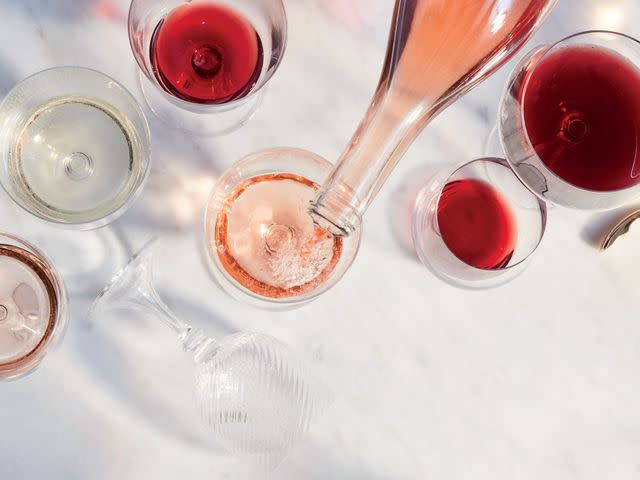Non-alcoholic wines have come a long manner in recent years, supplying wine fanatics the wealthy flavors and reports of traditional wines without the alcohol. In 2025, improvements in winemaking technology have made those alcohol-loose alternatives greater sophisticated and flavorful than ever before.
But how precisely are non-alcoholic wines made? Let’s check the step-by-step method at the back of crafting those first rate beverages.
Step 1: Harvesting the Grapes
Like all wines, the system starts offevolved with the harvest of grapes. The satisfactory of the grapes plays a critical function within the final product, and the choice of the proper grape range is key to producing notable non-alcoholic wine. In many instances, grapes are picked at the peak of ripeness to ensure the satisfactory flavors. Whether it is cabernet sauvignon, chardonnay, merlot, or pinot noir, the grapes selected will form the character of the non-alcoholic wine.
Step 2: Crushing and Fermentation
Once the grapes are harvested, they are overwhelmed to extract the juice. The juice is then positioned into fermentation tanks, wherein the winemaking magic begins. During this degree, herbal yeasts are added to the juice to begin the fermentation procedure. The sugar within the grapes is converted into alcohol, which gives traditional wines their alcoholic content material.
In the case of non-alcoholic wine, the goal is to preserve the herbal flavors of the wine whilst casting off the alcohol. As the grapes ferment, careful interest is paid to the timing and technique to make sure the flavors broaden fully while getting ready for the alcohol removal procedure.
Step 3: Alcohol Removal
This is the maximum essential step within the advent of non-alcoholic wine. After fermentation, traditional wines are commonly elderly and bottled with their alcohol content intact. However, for non-alcoholic wines, the alcohol must be eliminated.
There are some unique strategies used to put off alcohol, with the maximum common being distillation and reverse osmosis:
Distillation: This method involves gently heating the wine to a temperature that evaporates the alcohol, which is then separated from the liquid. The remaining wine retains its flavors, even though distillation can occasionally strip some of the delicate aromas. This technique is regularly used for red wines and complete-bodied whites.
Reverse Osmosis: This process uses a unique filter out that separates the alcohol from the wine. The wine is handed thru the filter out, and the alcohol is eliminated. The ensuing wine is then reintroduced to the last liquid, assisting to maintain extra of the wine’s original flavors and aromas. Reverse osmosis is a gentler method and is frequently favored for mild wines and sparkling wines.
These techniques ensure that the wine has no greater than zero.Five% alcohol by quantity (ABV), a stage considered non-alcoholic in maximum nations.
Step 4: Flavor Enhancement and Balance
After the alcohol is eliminated, the wine often undergoes blending to reap the favored flavor profile. This can encompass the addition of fruit extracts, herbal flavors, or a mixture of each to beautify the flavor and ensure the wine nonetheless has the complexity and intensity of a conventional wine. For example, darkish berry flavors might be introduced to a purple wine, even as a citrusy zest might be added to a white wine.
This is likewise when the wine is adjusted for sweetness. Many non-alcoholic wines are barely sweeter than their alcoholic counterparts to atone for the taste changes that occur during the alcohol elimination process. This balancing act guarantees that the very last product is smooth, fun, and continues the essence of a conventional wine.
Step 5: Filtration and Bottling
Once the wine has been combined and flavored, it undergoes a very last filtration to do away with any remaining impurities and make sure clarity. After filtration, the wine is prepared to be bottled.
The bottling manner is almost same to that of conventional wine. The wine is positioned in bottles, sealed with corks or screw caps, and labeled on the market. For non-alcoholic wines, the label will typically imply “alcohol-unfastened” or “non-alcoholic” to tell customers of the product’s alcohol content.
Step 6: Aging (Optional)
While non-alcoholic wines do now not normally undergo the long growing old method that conventional wines do, some winemakers select to age their non-alcoholic wines for a quick length to permit the flavors to expand in addition. This is specially common for reds or complete-bodied whites, which advantage from some time in o.K.Barrels or stainless-steel tanks. Aging can help beautify the wine’s complexity and mouthfeel, making the wine greater fun and giving it a cultured end.
Step 7: Quality Control
Before non-alcoholic wines hit the cabinets, they go through sizeable great manipulate to make sure that they meet the excessive standards of each flavor and protection. Wine tasters and lab technicians will evaluate the final product to ensure that the wine is unfastened from defects and that its taste profile is balanced. This procedure is important to keeping the consistency and pleasant of non-alcoholic wines.
Step 8: Packaging and Distribution
Once the wine has exceeded all assessments and is deemed geared up for the market, it’s far packaged and dispensed to retailers and consumers. Many top class non-alcoholic wines are provided in fashionable packaging to enchantment to state-of-the-art palates. These wines are regularly determined in strong point wine stores, excessive-stop grocery stores, or may be ordered without delay from wineries.
Non-Alcoholic Wine in 2025: The Future of Wine Making
In 2025, non-alcoholic wine production has reached new heights of innovation, with improved methods of alcohol removal and higher preservation of flavor. The winemaking system continues to evolve, allowing clients to experience exquisite non-alcoholic wines that rival the excellent alcoholic options.
Whether you’re choosing non-alcoholic wine for fitness motives, being pregnant, or definitely due to the fact you select the taste, the sector of wine has unfolded new opportunities, making it less complicated than ever to experience all of the pleasures of wine without the drawbacks of alcohol.
Frequently Asked Questions (FAQs)
Q: Are non-alcoholic wines absolutely alcohol-unfastened?
A: Non-alcoholic wines typically contain no more than zero.Five% alcohol via volume (ABV), which is taken into consideration non-alcoholic in most countries.
Q: How do non-alcoholic wines taste as compared to traditional wines?
A: Non-alcoholic wines have come a long way in terms of flavor. Modern strategies, like opposite osmosis and distillation, hold the wine’s herbal aromas and flavors, permitting it to hold a flavor that carefully mirrors conventional wines.
Q: Can I pair non-alcoholic wine with meals like regular wine?
A: Yes! Non-alcoholic wines pair nicely with meals just like ordinary wines. There are many alternatives that paintings flawlessly with cheese, seafood, meats, and desserts, permitting you to enjoy the identical wine-and-meals experiences without the alcohol.
By information the manufacturing technique behind non-alcoholic wines, consumers can appreciate the craftsmanship and interest to detail that goes into each bottle. Whether you’re exploring for health reasons or clearly looking for an alcohol-unfastened alternative, non-alcoholic wines offer a complicated and exciting choice for any occasion.
Related Articles:
Top Non-Alcoholic Wines to Pair with Gourmet Meals in 2025
How to Host a Wine Tasting Party with Non-Alcoholic Wines in 2025?
Keto-Friendly and Vegan Non-Alcoholic Wines: What to Look For in 2025

